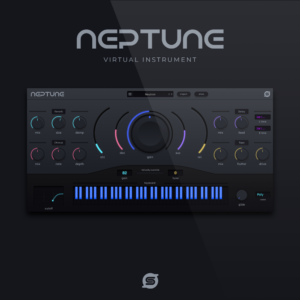You can contact us 24/7 on contact@afroplug.com
The best discounts this week
Every week you can find the best discounts here.
- Loops & SamplesAfrobeat, Amapiano, Guitars, Vocals, Voxs
Vocalise Sample pack vol2
Soca Calypso Bundle
Neptune
Afrohouse Angolano Essential
Afroplug Cap
Urban Vibes
Afrotech Kuduro Essentials
Categories
Adsense
Do You Need Help ?
contact@afroplug.com
Recent Posts
Post Widget

Get Producer News,Tips, Offers & Freebies
Need to find the right chords to play to produce your next hit? The free chord Melody Progression generator plugin Ripchord is your solution for Guitars, Keyboards and more
Ripchord : Free Music Theory VST
Ripchord by Trackbout is a free Open Source MIDI VST plugin ideal for creating Chord progressions for your music productions. It is available for Mac an PC.
You can :
- create Custom Chord Presets from scratch
- load Community Presets or Expansion packs
- Import any MIDI file that contains chords
- access 2 modes : play and edit
Download for free Ripchord : here
Wait..what is a chord?
In music, a Chord is a set of notes considered as forming a whole from the point of view of harmony. Most often, these notes are simultaneous, superimposed at the same time; but chords can also be expressed by successive notes, for example in arpeggios.
In tonal harmony, the term “chord” designates a combination of at least three simultaneous notes. There are several classifications of chords and several ways of describing their formation; the chords corresponding to these descriptions are called “classified chords “. Superpositions of notes not classified as chords are called “clusters “.
Until the Renaissance, superpositions of several notes were not considered as chords. Musical writing was governed exclusively by the rules of superpositions of notes and melodic lines, which would form the writing process called counterpoint. However, from the end of the 14th century, greater attention was paid to the superimposition of three consonant notes, designated today by the intervals that separate them : third and fifth, third and sixth, fourth and sixth.
The growing taste for the full sonority of superpositions of three consonant notes is probably at the origin of the notion of chord. This type of sonority was very much in demand in the sixteenth century, and among them, in particular, the combination of thirds and fifths. Some compositions of the second half of the sixteenth century, such as Lassus’s, are composed almost exclusively of this type of sonority.
The appearance of the basso continuo at the end of the 16th century, a method of accompaniment that consisted of piling consonances (and in some cases dissonances) on top of the bass part, favored the awareness of consonant combinations as “blocks” in the constructional game that is composition. In addition, one becomes aware that the three consonant combinations, third and fifth, third and sixth, fourth and sixth, can be considered as “inversions” of each others.
Johannes Lippius, in particular, in several treatises published around 1610 , explains that third and sixth and fourth and sixth can be considered as inversions of third and fifth by moving the bass above the other voices: C-E-G, third and fifth, for example, can become E-G-C third and sixth by moving the bass (C) up an octave.
Some popular music styles, mainly African-American, such as modal jazz (initiated by Miles Davis), funk (initiated by James Brown) or techno, do not always consider the chord as the founding element, and may use modes or pentatonic scales as basic elements. The latter, simple in nature, are enriched with chords based on notes that do not necessarily belong to the scale itself. The direct consequence is that most of the music is amodal, in the classical sense of the term (i.e., it is not based on major or minor modes).
The mode, the color, is isolated within the chord itself, and not fixed, imposed by a prior choice of scale. Usual major or minor scales can also be used following the development of a chord and be the object of the construction of an entire piece, although this is a less frequent process without being rare.
This is how the chord notation commonly used in guitar or bass is constructed.











